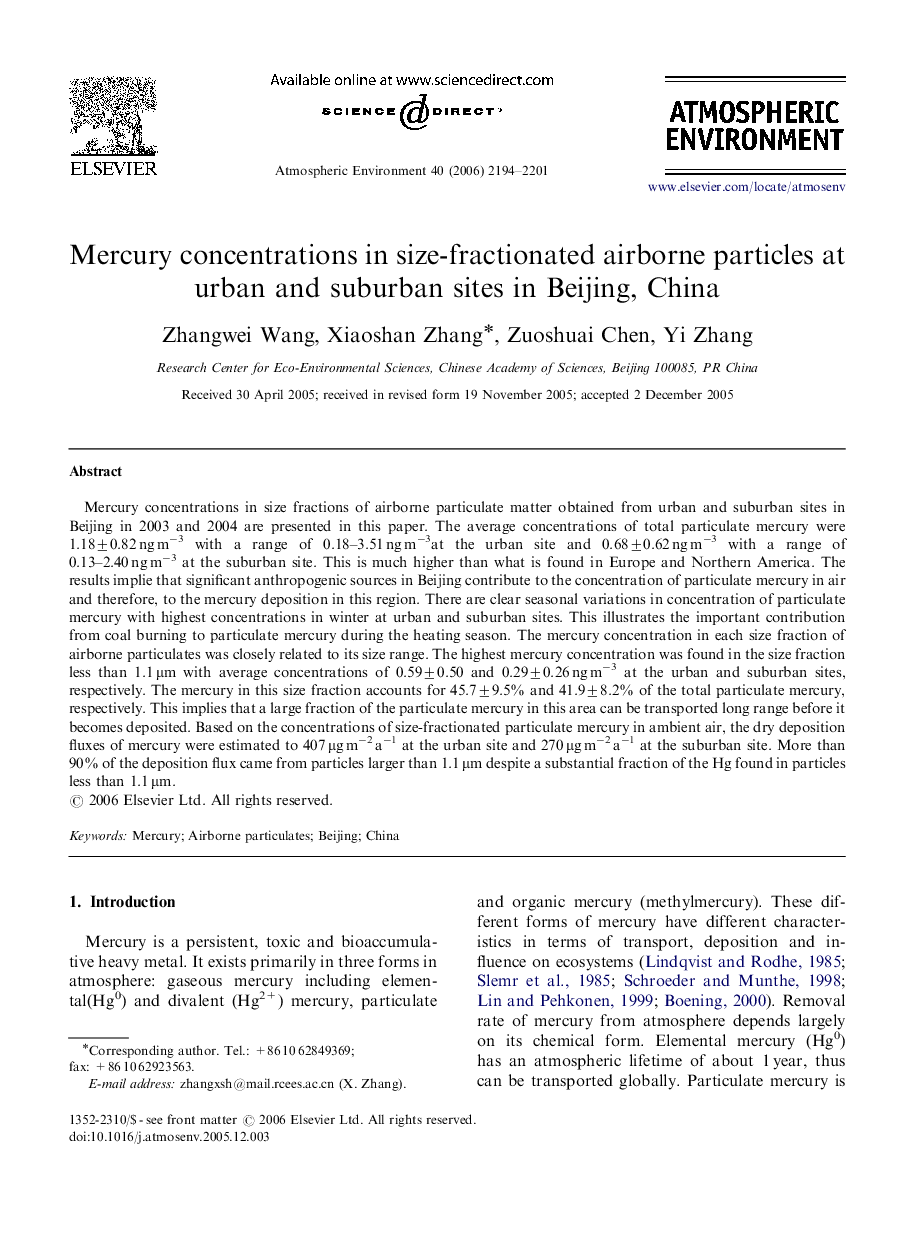| Article ID | Journal | Published Year | Pages | File Type |
|---|---|---|---|---|
| 4445065 | Atmospheric Environment | 2006 | 8 Pages |
Mercury concentrations in size fractions of airborne particulate matter obtained from urban and suburban sites in Beijing in 2003 and 2004 are presented in this paper. The average concentrations of total particulate mercury were 1.18±0.82 ng m−3 with a range of 0.18–3.51 ng m−3at the urban site and 0.68±0.62 ng m−3 with a range of 0.13–2.40 ng m−3 at the suburban site. This is much higher than what is found in Europe and Northern America. The results implie that significant anthropogenic sources in Beijing contribute to the concentration of particulate mercury in air and therefore, to the mercury deposition in this region. There are clear seasonal variations in concentration of particulate mercury with highest concentrations in winter at urban and suburban sites. This illustrates the important contribution from coal burning to particulate mercury during the heating season. The mercury concentration in each size fraction of airborne particulates was closely related to its size range. The highest mercury concentration was found in the size fraction less than 1.1 μm with average concentrations of 0.59±0.50 and 0.29±0.26 ng m−3 at the urban and suburban sites, respectively. The mercury in this size fraction accounts for 45.7±9.5% and 41.9±8.2% of the total particulate mercury, respectively. This implies that a large fraction of the particulate mercury in this area can be transported long range before it becomes deposited. Based on the concentrations of size-fractionated particulate mercury in ambient air, the dry deposition fluxes of mercury were estimated to 407 μg m−2 a−1 at the urban site and 270 μg m−2 a−1 at the suburban site. More than 90% of the deposition flux came from particles larger than 1.1 μm despite a substantial fraction of the Hg found in particles less than 1.1 μm.
